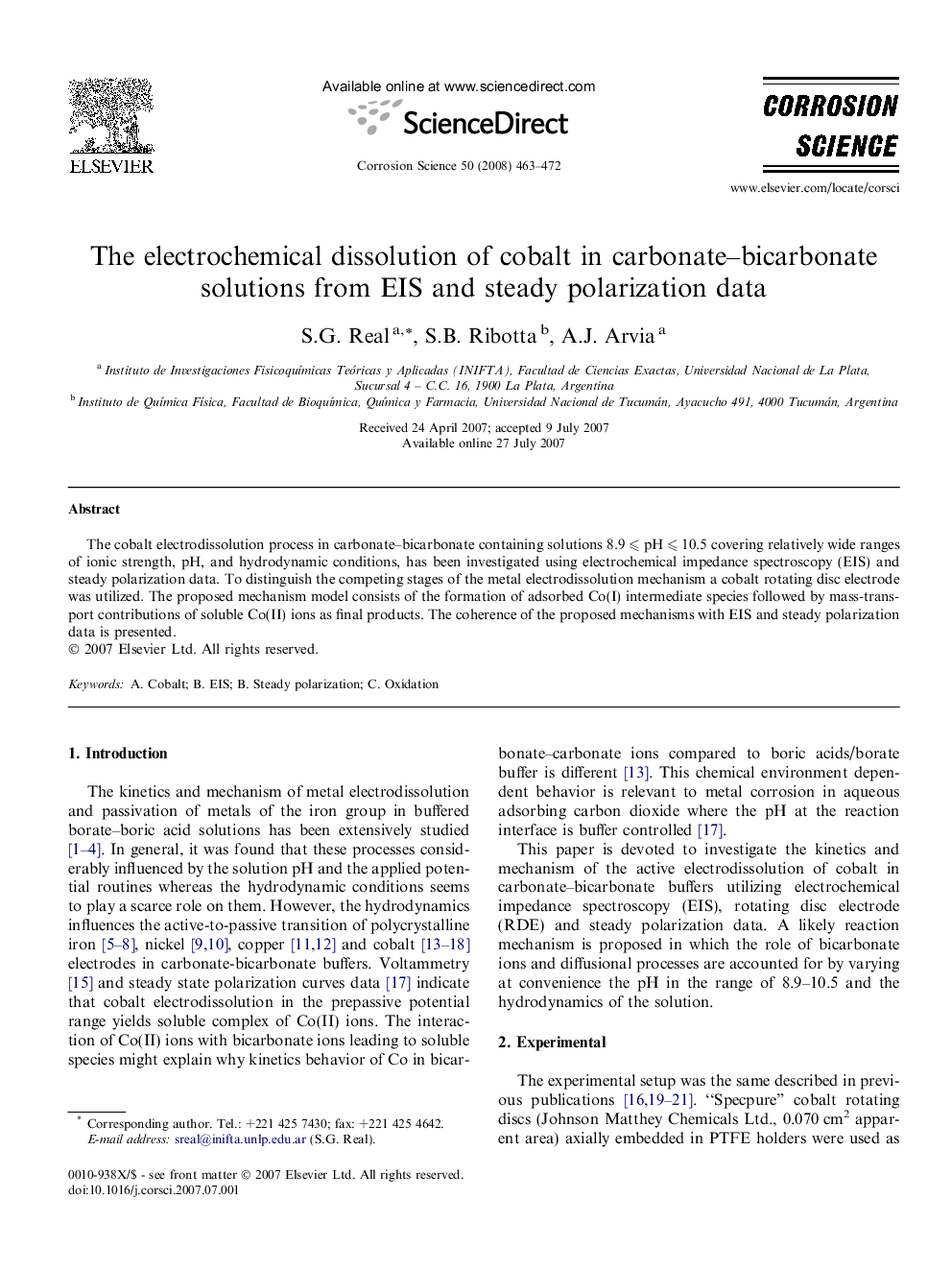| Article ID | Journal | Published Year | Pages | File Type |
|---|---|---|---|---|
| 1471617 | Corrosion Science | 2008 | 10 Pages |
Abstract
The cobalt electrodissolution process in carbonate–bicarbonate containing solutions 8.9 ⩽ pH ⩽ 10.5 covering relatively wide ranges of ionic strength, pH, and hydrodynamic conditions, has been investigated using electrochemical impedance spectroscopy (EIS) and steady polarization data. To distinguish the competing stages of the metal electrodissolution mechanism a cobalt rotating disc electrode was utilized. The proposed mechanism model consists of the formation of adsorbed Co(I) intermediate species followed by mass-transport contributions of soluble Co(II) ions as final products. The coherence of the proposed mechanisms with EIS and steady polarization data is presented.
Keywords
Related Topics
Physical Sciences and Engineering
Materials Science
Ceramics and Composites
Authors
S.G. Real, S.B. Ribotta, A.J. Arvia,
